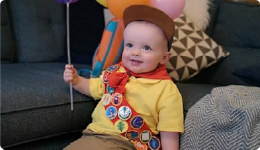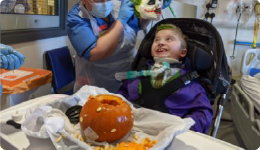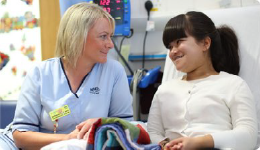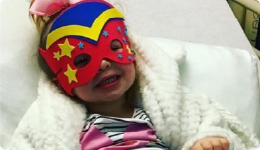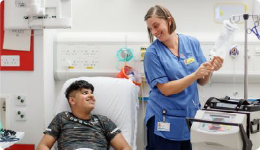Movement Skills
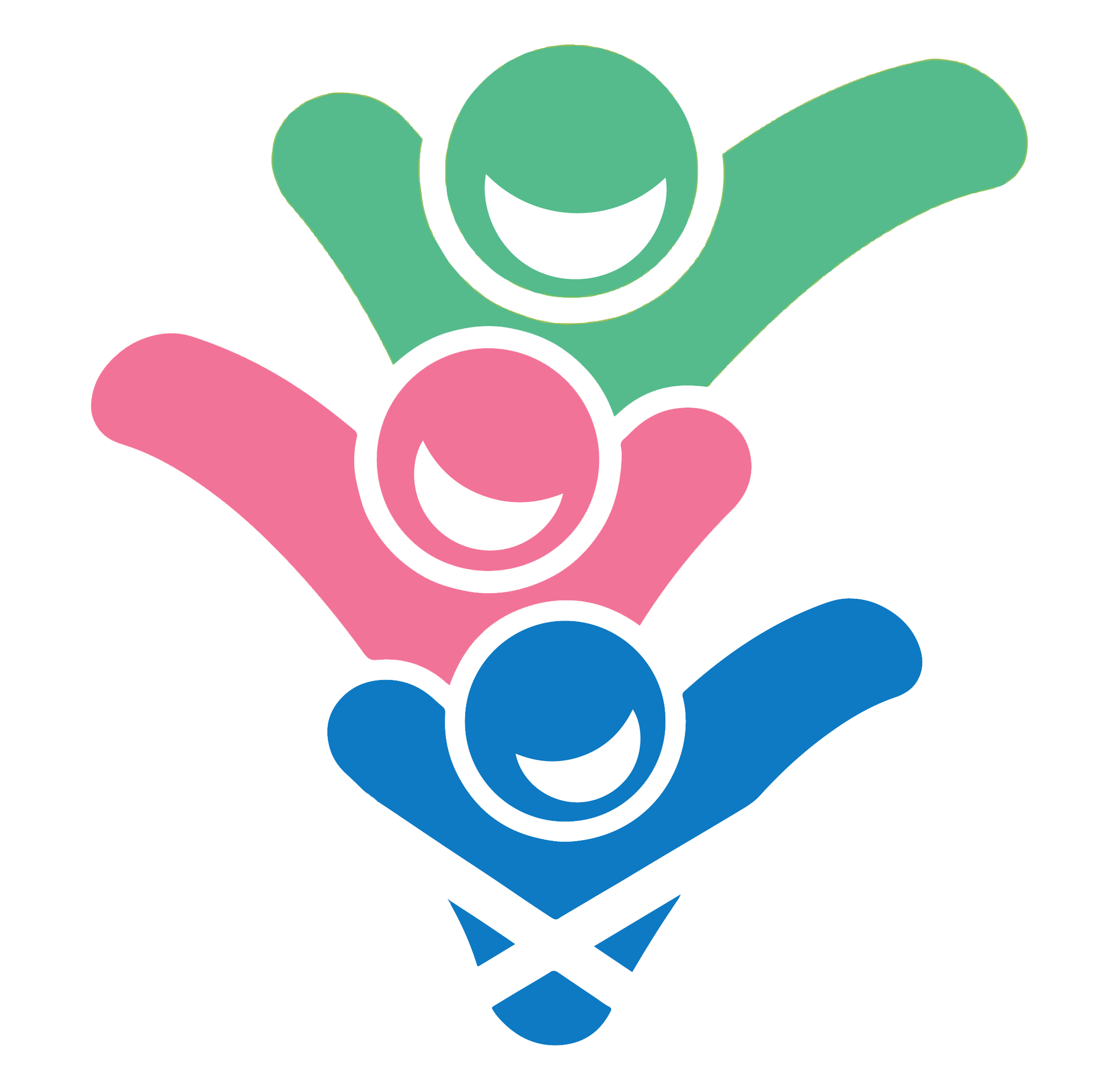
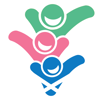 Balance and Mobility
Balance and Mobility
Between the ages of 3 and 5 years your child will master going up and down stairs. They will start by doing one step at a time and then using one foot on each step. They will go from needing to hold on to being able to go up and down without holding on.
Your child will be falling less. They are bound to have the odd accident when they go too fast or when they are distracted. They will still need cuddles if they hurt themselves or give themselves a fright.
By the age of 5 your child will be able to get about in a lots of ways such as walking, marching, running, skipping, jumping and hopping. They will enjoy moving to music and are developing some rhythm.
Your child's balance skills are mostly in place now. They just need to keep practicing them by trying lots of different movement experiences. They should be able to stand on one leg, climb a ladder on a slide at the park and pedal a trike. Keep making things harder and find as many ways to move as possible. Remember to keep it fun. For example; walking along lines and different surfaces, stepping stones, benches, balance beams and rope bridges etc.
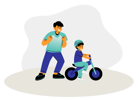 Your child might be starting to learn to ride a bike. A balance bike is a good way to start. Look out for activities in the community like Play on Pedals and Balanceability. For more information look at the Learning to Ride a Bike section.
Your child might be starting to learn to ride a bike. A balance bike is a good way to start. Look out for activities in the community like Play on Pedals and Balanceability. For more information look at the Learning to Ride a Bike section.
Ball Skills
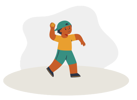 Between the ages of 3 and 5 years your child's ball skills will develop. Each child learns these skills at their own pace. Giving them lots of opportunities to play with balls of different sizes and weights will help them to improve their skills.
Between the ages of 3 and 5 years your child's ball skills will develop. Each child learns these skills at their own pace. Giving them lots of opportunities to play with balls of different sizes and weights will help them to improve their skills.
By the time they go to school with the the right practice they can catch, throw, bounce and kick a ball.
For more information and ideas to help you develop your child's ball skills visit our Ball Skills section.
Hand Skills
Between the ages of 3 and 5 years your child's hand skills will continue to develop if they are given opportunities to practice.
They will be using one hand as the doing hand and the other as a helping hand more of the time. You might notice this when they are putting beads onto a string, doing a jigsaw or building with blocks.
Your child is now able to touch their thumb to each finger in turn.
Your child might be able to use scissors to snip. Teach them how to hold the scissors first. Then teach them to open and close the scissors and then how to snip. At this stage it is important that they use child sized safety scissors as these are easier to hold. If you know that your child is left handed make sure to give them left handed scissors.
Getting Ready to Write
Children learn to write at school but there are lots of things they need to do first. If they start doing these things now it will make it easier for them to learn to write when the time is right. Choose the activities that are right for you and your child.
Please be aware that Playdough (both shop bought and homemade) may contain wheat. Make sure you use a wheat free alternative if there is a known wheat allergy.
Always supervise your child when they are playing with small objects, so they don't put them in their mouths.
Before I learn to write I need to:
Be Strong
I need a strong body and arms. To help me get strong you can encourage me to:
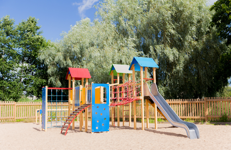 Crawl - Crawling helps to build the muscles in my tummy, back, shoulders and arms.
Crawl - Crawling helps to build the muscles in my tummy, back, shoulders and arms.- Climb - Climbing and hanging at the park helps me to build my upper body muscles.
- Play - Play can help to build my muscles too. Build me an indoor obstacle course. I could move like an animal; try being a crab, bear, bunny or frog.
- Help - Helping with housework can build my strength. I could carry a shopping bag, vacuum, sweep up, mop, hang up the washing or water the plants.
Use My Hands
I need strong hands and fingers. I need to be able to move my fingers and thumbs. I need to be able to use two hands together. I need one hand to be the leader and one hand to be the helper. To help me do this I need to:
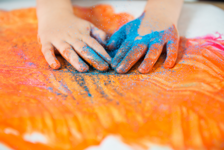 Get Messy - Messy play helps me to explore, build my hand muscles and learn to control my fingers. I could try squeezing and rolling playdough, scooping and pouring sand or water, finding toys in jelly or cooked spaghetti.
Get Messy - Messy play helps me to explore, build my hand muscles and learn to control my fingers. I could try squeezing and rolling playdough, scooping and pouring sand or water, finding toys in jelly or cooked spaghetti.- Play - Play helps to make my hands strong, teaches me how to use my hands together and one finger at a time. I could play with pegs, thread beads, put on a show with finger puppets or sing clapping and finger songs (like Tommy Thumb).
- Create - I could build with bricks, make playdough creations, build a jigsaw or create art by ripping and tearing, cutting, gluing and sticking. This helps me to develop hand skills, different grasps and strength.
- Help - Helping at home helps me to get strong hands, learn different grasps and how to use tools. I could bake or cook, wash and dry the dishes, load the washing machine, hang up the washing and fold the clothes.
Scribble and Draw
I need to learn to make marks before I learn how to make letters. To help me learn how to scribble and draw I need to:
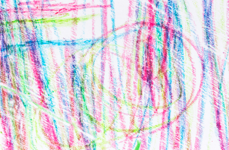 Explore - I need to make marks on different surfaces and in different textures. I could draw in sand, dry rice, shaving foam, playdough. I could draw on the ground, on a wall, under a table, on a table, on an easel.
Explore - I need to make marks on different surfaces and in different textures. I could draw in sand, dry rice, shaving foam, playdough. I could draw on the ground, on a wall, under a table, on a table, on an easel.- Make Marks - Using different tools to make marks helps me to get strong and practice my grasps. I could use a toy car dipped in paint, a stick to draw in the mud, a wet mop to draw on the garden slabs or pavement (keep them away from the road), a spray bottle filled with coloured water (use food colouring) to draw in the snow.
- Colour and Scribble - I need to colour in and scribble to help me learn how to control the marks I am making. I could use chalk, crayons, felt-tip pens, paint and paint brushes.
- Draw - I need to draw different lines (straight, wavy, zigzag, spirals, diagonals) and shapes (circles, crosses, squares, triangles). I need to be able to draw these shapes before I can form letters.
Look at Letters and Words
I need to see letters and words around me. I need to see adults write in every day life. You can help me to:
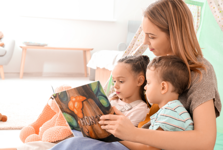 Read - I need to look at books with you. You can point out different letters and words.
Read - I need to look at books with you. You can point out different letters and words.- Find - I need to look for letters and words when we’re out and about. Look at signs, labels etc.
- Play - I need to play with letters. Hide magnetic or foam letters and go on a letter hunt. Build letters using toy bricks, rocks, playdough, buttons, beads or anything else you can find.
- Help - I need to know that writing is important in everyday life. Write a shopping list or birthday card with me.
Downloadable version of Before I Learn to Write to save or print.


